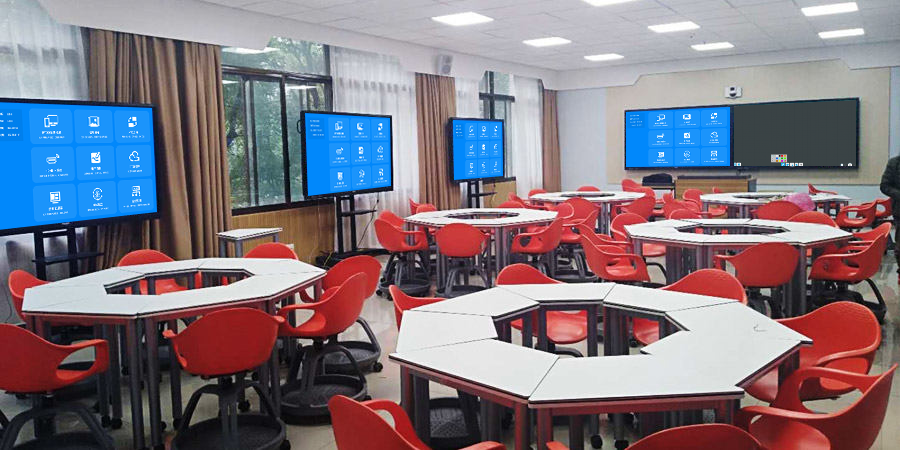Amid the wave of educational digitalization, “
interactive classrooms” have become a standard configuration for smart campuses. Wireless screen mirroring and multi-screen interaction technology are precisely the keys to activating classrooms and realizing a “student-centered” approach.
Traditional audio-visual classrooms only enable one-way content display, while interactive classrooms emphasize real-time interaction and feedback between teachers and students, as well as among students—all facilitated by screens.
By mirroring content from mobile phones or tablets, teachers can synchronize on-the-go annotations and experimental operations to the large screen in real time. This allows them to move freely among student groups to provide targeted guidance.
Students can instantly share their problem-solving processes, mind maps, or research results to the main screen with one click. This enables the whole class to observe and learn together, enhancing their sense of participation and accomplishment.
Using the multi-screen interaction function, teachers can display different answers or plans from multiple students simultaneously. This guides the whole class to analyze, compare, and debate, fostering critical thinking skills.
Teachers can quickly switch mirrored content—from courseware to online resources, then to educational videos. This enriches classroom content and ensures smooth transitions between different teaching materials.
To ensure optimal results, it is recommended to:
- Select professional wireless screen mirroring devices that support universal protocols such as Google Cast and Miracast.
- Build a stable and reliable campus wireless network.
Empowering education with wireless screen mirroring technology—transforming classrooms from teachers’ “lecterns” to shared “stages” for both teachers and students—is an inevitable requirement for cultivating future innovative talents.

